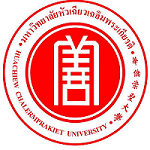Please use this identifier to cite or link to this item:
https://has.hcu.ac.th/jspui/handle/123456789/4790Full metadata record
| DC Field | Value | Language |
|---|---|---|
| dc.contributor.author | สุภาณี ชวนเชย | - |
| dc.contributor.author | เจนจิรา อัสพันธ์ | - |
| dc.contributor.author | วรรณิษา แสนพันธ์ | - |
| dc.contributor.author | บุญรัตน์ โง้วตระกูล | - |
| dc.contributor.author | Supanee Chounchay | - |
| dc.contributor.author | Jenjira Assapun | - |
| dc.contributor.author | Wannisa Saenphan | - |
| dc.contributor.author | Boonrat Ngowtrakul | - |
| dc.contributor.other | Huachiew Chalermprakiet University. Faculty of Physical Therapy | en |
| dc.contributor.other | Huachiew Chalermprakiet University. Faculty of Physical Therapy | en |
| dc.contributor.other | Huachiew Chalermprakiet University. Faculty of Physical Therapy | en |
| dc.contributor.other | Huachiew Chalermprakiet University. Faculty of Physical Therapy | en |
| dc.date.accessioned | 2025-11-08T09:50:19Z | - |
| dc.date.available | 2025-11-08T09:50:19Z | - |
| dc.date.issued | 2023 | - |
| dc.identifier.citation | วารสารกายภาพบำบัด 45, 2 (พฤษภาคม-สิงหาคม 2566) : 112-123 | en |
| dc.identifier.uri | https://has.hcu.ac.th/jspui/handle/123456789/4790 | - |
| dc.description | สามารถเข้าถึงบทความฉบับเต็ม (Full Text) ได้ที่ : https://he02.tci-thaijo.org/index.php/tjpt/article/view/258837/180457 | en |
| dc.description.abstract | ที่มาและความสำคัญ: เทคโนโลยีเข้ามามีบทบาทต่อการใช้ชีวิตในวัยเด็กเพิ่มสูงขึ้นส่งผลให้เด็กไทยมีพัฒนาการที่ถดถอยลงทั้งทางด้านร่างกายและความคิด ทำให้เด็กเสี่ยงต่อความบกพร่องทางการเรียนรู้ อย่างไรก็ตาม ยังไม่มีการศึกษาใดที่แสดงถึงความสัมพันธ์ระหว่างทักษะการเคลื่อนไหวและทักษะทางความคิดเชิงบริหารของเด็กวัยประถม วัตถุประสงค์: เพื่อศึกษาความสัมพันธ์ระหว่างทักษะทางความคิดเชิงบริหารด้านความจำ เพื่อใช้งาน การยั้งคิดไตร่ตรอง และความยืดหยุ่นทางความคิด กับทักษะการเคลื่อนไหวในเด็กอายุ 7-10 ปี ประกอบด้วย ความคล่องแคล่วของทักษะการใช้มือ การเคลื่อนไหวแบบมีเป้าหมาย และความสามารถในการทรงตัว วิธีการวิจัย:นักเรียนระดับประถมศึกษาเพศชายและหญิ ง อายุ 7-10 ปี จำนวน 84 คน ได้รับการทดสอบทักษะพื้นฐานทางความคิดเชิงบริหาร 3 ด้านหลัก ได้แก่ (1) ความจำเพื่อใช้งาน ทดสอบด้วย digit span test (2) การยั้งคิดไตร่ตรองทดสอบด้วย stroop color and word test และ (3) ความยืดหยุ่นทางความคิดทดสอบด้วย trail making test และได้รับการทดสอบทักษะการเคลื่อนไหวด้วยชุดทดสอบ movement assessment battery for children-2 (MABC-2) ประกอบด้วย ความคล่องแคล่วของทักษะการใช้มือ การเคลื่อนไหวแบบมีเป้าหมาย และความสามารถในการทรงตัว จากนั้นวิเคราะห์หาค่าความสัมพันธ์ทางสถิติ ด้วยสหสัมพันธ์สเปียร์แมน (Spearman correlation coefficient; rs) กำหนดค่านัยสำคัญทางสถิติน้อยกว่า 0.05 ผลการวิจัย: พบความสัมพันธ์อย่างมีนัยสำคัญทางสถิติในทิศทางตรงกันข้ามระหว่างทักษะทางความคิดเชิงบริหารด้านความยืดหยุ่นทางความคิดกับคะแนนรวม ทักษะการเคลื่อนไหว (rs= -0.331, p= 0.002) ความคล่องแคล่วของทักษะการใช้มือ (rs= -0.267, p= 0.014) แ ละความสามารถในการทรงตัว (rs= -0.280, p= 0.010) อย่างไรก็ตามไม่พบความสัมพันธ์อย่างมีนัยสำคัญทางสถิติระหว่างทักษะทางความคิดเชิงบริหารด้านความจำเพื่อใช้งาน และการยั้งคิดไตร่ตรองกับทักษะการเคลื่อนไหว (p> 0.05) สรุปผล: ทักษะทางความคิดเชิงบริหารด้านความยืดหยุ่นทางความคิดที่ดีมีความสัมพันธ์กับทักษะการเคลื่อนไหวที่ดีในเด็กอายุ 7 ถึง 10 ปี โดยเฉพาะอย่างยิ่งความคล่องแคล่วของทักษะการใช้มือและความสามารถในการทรงตัว | en |
| dc.description.abstract | Background: Technology plays an important role in daily life for children. As a result, physical and cognitive development in Thai children has declined. Consequently, their learning ability is poor. However, the relationship between motor skills and executive function in elementary school-aged children is still unclear. Objective: To evaluate the association between executive function and motor skills in children aged 7 -10 years. Methods: The participants comprised 84 boys and girls aged 7-1 0 years. All participants were assessed three domains of executive function, including working memory, inhibitory control, and cognitive flexibility using a digit span test, stroop color and word test, and trail making test, respectively. In addition, they were tested with a movement assessment battery for children -2 (MABC-2) test, which consisted of manual dexterity, aiming and catching, and balance. All data were analyzed for statistical correlation by Spearman correlation coefficient, at p-value<0.05. Results: The cognitive flexibility was found statistically negative correlation with motor skills (rs= -0.331, p= 0.002), manual dexterity (rs= -0.267, p= 0.014) and balance (rs= -0.280, p= 0.010). However, there was no statistical correlation between working memory, inhibitory control, and motor skills. Conclusion: Cognitive flexibility is associated with manual dexterity and balance in school-aged children 7 to 10 years old. | en |
| dc.language.iso | th | en |
| dc.subject | พัฒนาการของเด็ก | en |
| dc.subject | Child development | en |
| dc.subject | เด็ก -- การเจริญเติบโต | en |
| dc.subject | Children -- Growth | en |
| dc.subject | เด็ก -- การเคลื่อนไหว | en |
| dc.subject | Children -- Movements | en |
| dc.subject | ความสามารถทางการบริหารในเด็ก | en |
| dc.title | ความสัมพันธ์ระหว่างความคิดเชิงบริหารและทักษะการเคลื่อนไหวในเด็กวัยเรียนอายุ 7-10 ปี | en |
| dc.title.alternative | The relationship between executive function and motor skills of school-aged children 7-10 years old | en |
| dc.type | Article | en |
| Appears in Collections: | Physical Therapy - Articles Journals | |
Files in This Item:
| File | Description | Size | Format | |
|---|---|---|---|---|
| The-relationship-between-executive-function-and-moto-skills-of-school-aged-children-7-10years-old.pdf | 86.5 kB | Adobe PDF | View/Open |
Items in DSpace are protected by copyright, with all rights reserved, unless otherwise indicated.
